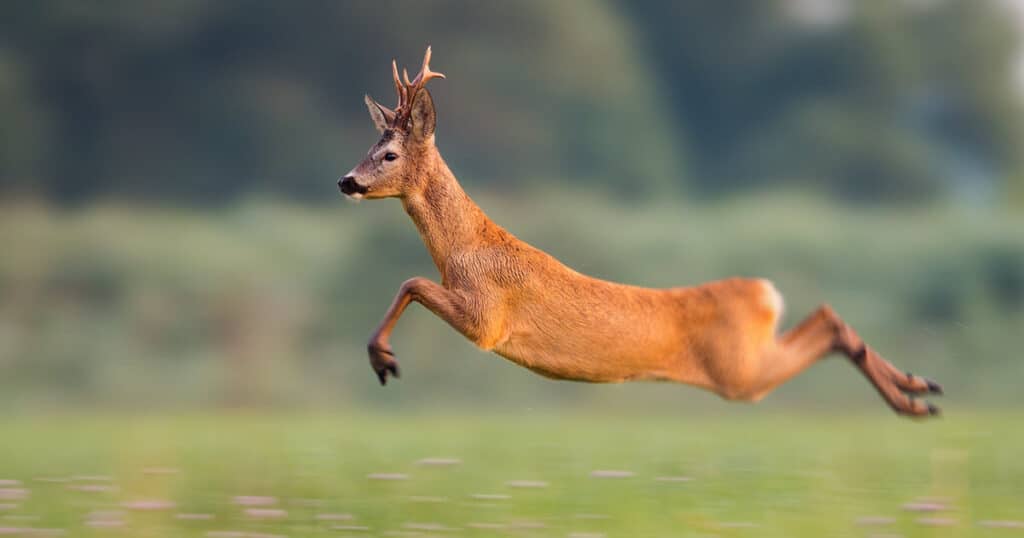A deer isn’t as fast as a cheetah, but the way they run is fascinating, and they have impressive speeds. Deer primarily run to evade predators and for their survival. But if you’re asking yourself how fast can deer run, the short answer is it depends.
A deer’s maximum run speed depends on the species or type of deer, the animal’s size, strength, and age. But many deer can run faster than 30 miles per hour. The Caribou is one of the fastest deer species, and they can reach top speeds of 50 miles per hour.
Now, while they do run very fast, the speed of a deer depends heavily on the time of the year, how much energy the animal wants to expend, and what their habitat is like.
In addition to all the running, deer are also really good at leaping and springing. Once again, everything boils down to survival.
How Fast Can a Normal Deer Run?
Deer are fast and can reach speeds of over 30 miles per hour. However, there are factors that affect their running speed.
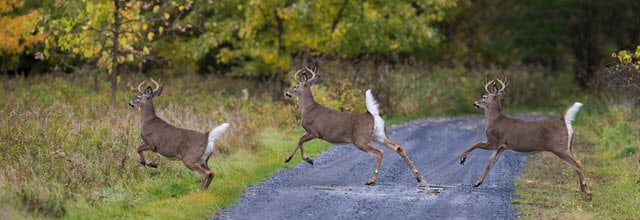
Generally, deer do not run and maintain a steady speed when traveling. What affects their speed is the threat, and the type of deer in question.
Normally, a deer would only run to escape predators. That means wolves, coyotes, and even human hunters. If they sense danger nearby, they will run for their lives.
However, that’s not the only circumstance that can lead a deer to run at high speed. If a male deer or buck is driven by high testosterone levels, pursuing a female deer or doe in the mating season can lead to that male moving quickly.
Normal deer can run anywhere between 35 to 40 miles per hour, but this speed is an estimate provided by experts, as some can run even faster than that.
Despite this impressive speed, deer cannot maintain that speed for a long period of time, and it is often a burst of speed they will reach before slowing down.
How Fast Can Whitetail Deer Run?
The White Tailed Deer is one of the most abundant deer species in North America. They get their name from the white fur underneath their tails.
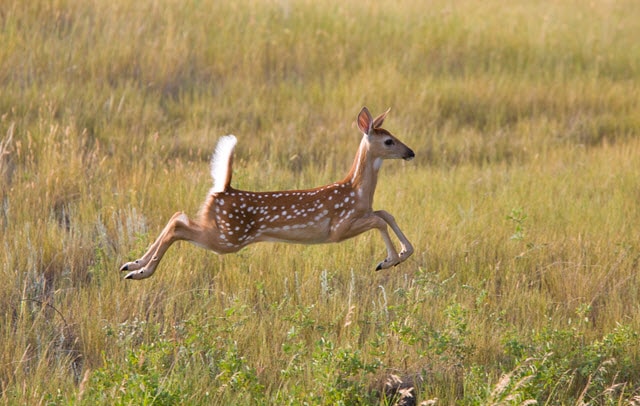
This deer’s weight (an average of 175 pounds, give or take) allows them to reach recorded speeds of up to 30 miles per hour. These gentle giants have three gait patterns:
- walk,
- trot, and
- bound.
Whitetailed deer are fast, and they are not above swimming to evade predators. They will run when they are able to sense danger and they will run fast.
What is the Average Speed of Deer?
Is there an average speed of deer, and if not how much does it vary from one species to the next?
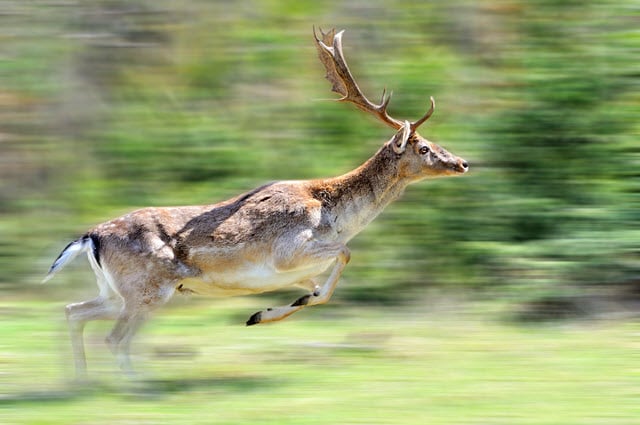
The truth is that it varies from one type of deer to the next. Here are some examples of the speeds of some deer species and how fast each can run:
| Species | Average Run Speed |
|---|---|
| White Tailed Deer | 30 miles per hour |
| Elk | 45 miles per hour |
| Caribou | 50 miles per hour |
| Moose | 35 miles per hour |
| Mule Deer | 35 miles per hour |
If you want to compare these speeds with a human, it’s almost 3 times faster than the speed of average humans (who can maintain speeds of around 10 miles per hour).
We are not talking about Olympians who can run short distances with bursts of about 20 miles per hour (which is still slower compared to deer).
These figures are estimates that you can equip yourself with so that you know what to expect when you are going hunting or if you want to go do some wildlife photography.
How does a Deer Avoid Predators?
A deer sprints for safety. It is good to have an idea of how it will run so that you are able to predict its movements.
First of all, a lot of deer will not maintain high speeds for a long time. This is because they need to conserve energy. So they employ a lot of defensive strategies with their running.
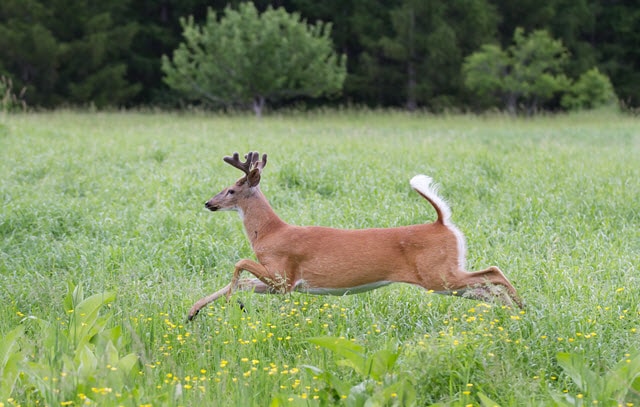
They will be more careful towards the winter months when food is scarce.
Often, a deer sensing danger will run and try to lure the hunter or predator towards a trail that they are familiar with. Often these trails will have lots of obstacles that would slow predators down. This way they are able to find safety faster and use their familiarity with the local obstacles to their advantage.
You will also notice that many deer run in zigzag motions. With the zigzag motions, they also run with fidgeting impulses. This zigzag motion is a defensive maneuver. When they run this way, it helps them see and sense danger and avoid the predators that are in pursuit.
The switching of directions not only allows deer to get a good view of predators chasing them, it often confuses the deer’s predator and prevents them from catching up to them.
Deer can also jump over fences and obstacles seven feet in height, and more if they are running at high speeds. At full speed, they can cover a distance of as much as 30 horizontal feet in a single leap if danger is near.
How to Tell a Deer is About to Run?
You can tell if a deer is about to run or not by observing their body language. This could be to communicate to other deer around them to know that danger is nearby or when they have to communicate with each other to define dominance.
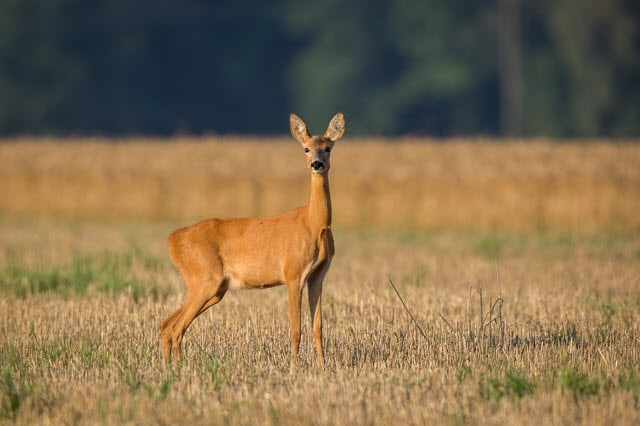
In terms of their body language, before they are about to make a run for it, deer often make distress signals. One of the ways they do this is by flagging – something that is a well-known signal of White Tailed deer.
They do this by raising their tail to show the white undersides. The tail is pointed upwards firmly. This indicates that danger is nearby and that they will be running very soon.
Another way of knowing that they will run is by noticing their tail and rump flare up. It is again, another way of warning other deer in the herd around them to be alert. This time, it means imminent danger is close – danger that is impossible to ignore.
When you see deer that are flagging or whose rump is flaring, you can be confident that the deer is about to bolt.
Final Thoughts About Deer Speed
Most people know that deer are fast, but are surprised that the average deer can reach speeds of 30 miles per hour or more.
Most deer run to avoid predation, but during the rut, you may see deer moving quickly in pursuit of a mate as well.

